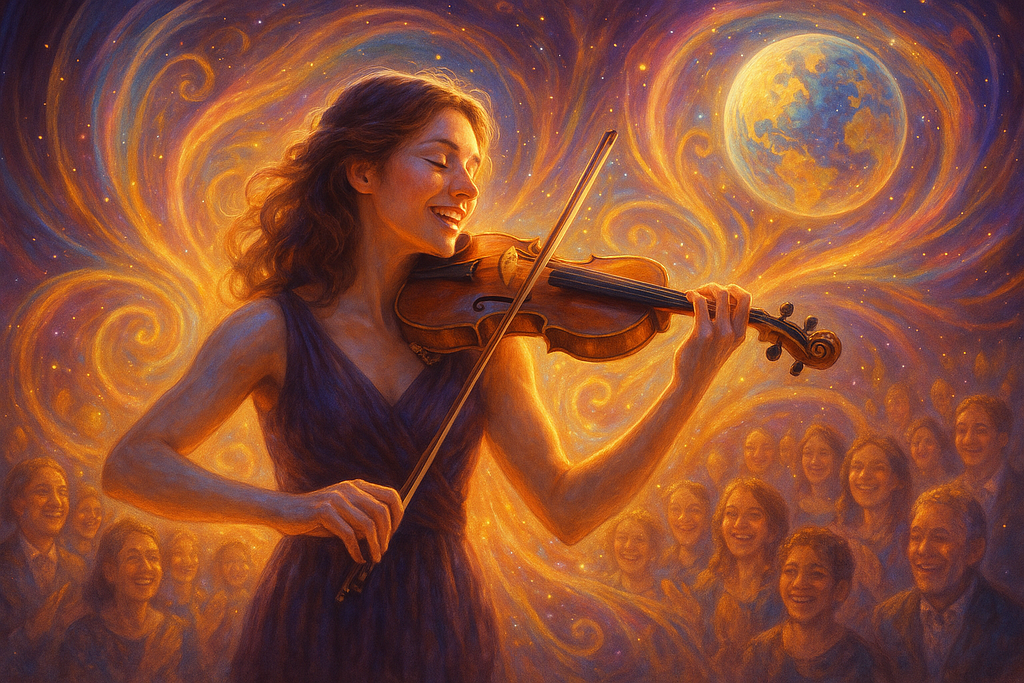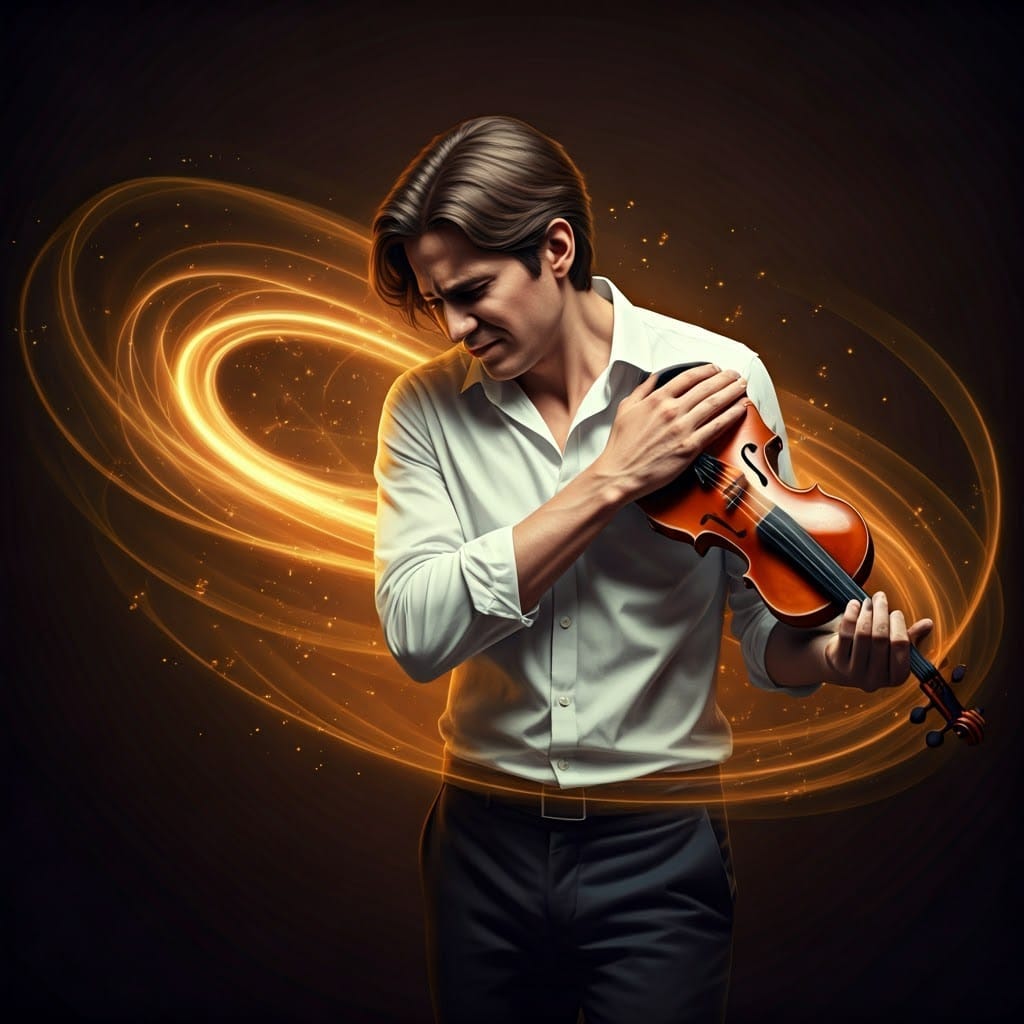The Six Pillars of Soulforce Performance Arts
What it means to be a performing artist has clearly evolved over time – we have enacted rituals, glorified religious or political ideals, provided secular entertainment, and plumbed the depths of the human spirit. Each role has been a reflection of the stage of development of human civilization at the time.
For example, in ancient times, to have even called someone a “performing artist” wouldn’t have made sense – these were simply members of the community who took part in rituals, dances, and story-telling. In pre-industrial societies such as medieval Europe, the division of labor had developed to a point where something akin to professional performing artists existed, and their role was typically to celebrate tradition and politico-religious power. The Renaissance allowed for the secularization of the arts and many of the performance art forms we are familiar with: opera, theater, and virtuoso concertos. In our post-industrial age, professional performing artists perform, teach, compose, and direct for pay, participate in formal academic settings, and manage various artistic organizations, among other activities.
Each stage of civilizational development has been accompanied by new technology, greater complexity, new challenges, and a more holistic world-view. Our current era, sometimes called the Information Age, is characterized by such technologies as the internet, is dizzyingly complex, includes many existential crises like climate change, and seems to be requiring us to become more and more aware of the utter interconnectedness – and even interbeing – of all of life on Earth.
Correspondingly, what it means to be a performing artist in the Information Age must reflect these new realities. We will have new roles, new points of view on our activities, new values, and new visions for ourselves and the world, as well as a radically holistic worldview which accommodates and provides proper context for all of this. The Information Age is still very young, so the exact forms of these new values, visions, and worldviews are not yet written in stone, but we can make some educated guesses.
So, with the caveat that the elements of a new conception of artistry will assuredly change over time and will certainly be different for people in all the varieties of circumstances in the world, I present to you “The Six Pillars of Soulforce Performance Arts,” which is my own best guess on what it now means to be a performing artist within this new age.
To Step Into the Story of Interbeing
Soulforce Performance Arts is based on a different sense of self – the Self of Interbeing. The recognition of our interbeingness suggests new ways of being, thinking, doing, playing, learning, and teaching… it touches every part of our lives.
Since problems like climate change (and so many other collective and personal problems), at their root, stem from the illusion of separation, then stepping into “Interbeing” will have the effect of cutting the root cause of all these problems, including climate change. And this will transform your art, too! At some level, many performing artists experience strain, anxiety, and meaninglessness in a variety of ways, but by stepping more and more into the Story of Interbeing (and I’ll show you how), your life and work as a performing artist will become infused with ease, soulfulness, purposefulness, and a sense that every expressive act has significance far beyond your wildest imaginings.
To Discover Your Life’s Purpose
While many of us already go into the arts because we feel some sort of calling to do so, the industrial-age pedagogical environment and conventional career options we encounter may not allow the fullest expression of the unique gifts that each of us is born with. This can lead to a feeling that something important is missing from our lives as performance artists.
That missing “something” is the full flowering of, as Frederick Buechner wrote, “the place where your deep gladness and the world’s deep hunger meet.” When a singer realizes that being a life-long member of an opera company isn’t for her, it doesn’t necessarily mean she’s not talented enough or that she “doesn’t have what it takes” – it could be that her soul’s desires simply don’t fit that mold. From this point of view, a lack of motivation, burnout, or a feeling of meaninglessness might very well be a clarion call to discover worthy goals greater than herself to be in service to.
To Bring Healing to a World in Crisis
One such goal is to bring healing to the many crises the world now faces. Many of us are painfully aware of our many social, ecological, and political crises, but are unsure how, as performing artists, to best contribute to their peaceful resolution.
Soulforce Performance Artists, aware of the interbeingness of ourselves and the world at large, feel confident that by coming more alive through our art we are bringing much-needed healing and regeneration to our world. At one level, connecting with such a goal is essential because there is just so much healing that is needed! And in a perfect example of interbeing, devoting ourselves to healing the world also heals the wounds within us that have come from our perceived disconnection from life as a whole. The very sense of purposefulness and vitality we sense in ourselves when this happens simultaneously benefits our personal self and global Self.
To Play From the Heart
An essential element of miracle-producing performances is expressive power. But in our attempts to either recreate performances according to tradition or to achieve technical perfection, we can lose the focus on what really brings performances alive. And without explicit instruction on exactly what brings performances alive, we often resort to using more tension and effort – which only diminishes our expressive power.
In order to bring our performances alive with spine-tingling expression, we need to be in contact with that which is alive inside us – the felt experience of our heart and soul. When this happens, without effort or artifice, every note we play will be suffused with presence and power.
To Discover Greater Freedom of Movement
Excess muscular tension acts like the e-brake in your car – you can still get around, but everything is harder and more awkward than it needs to be. This tension makes your body more uncomfortable, can cause repetitive strain injuries, interferes with all manner of techniques, diminishes your sound quality, and dampens emotional connection.
Drawing on lessons and methods from the Alexander Technique, we can learn to release excess muscular tension in the “critical moments” when it matters most in the practice room or while on stage. This improves all aspects of our artistry: letting go of tension simultaneously allows our technique to be more fluid, our body to feel and function better, and gives us a powerful sense of peace and presence. It is especially notable for how it reveals the awesome expressive power that makes itself known when we get out of the way of ourselves.
To Take Excellent Care of Ourselves
The starvation and depression of the artist, the exhaustion of the dancer who practices beyond what her body can manage, and the drug-induced excesses of the rock star are commonly thought to be integral to their artistic greatness. But this is only a misconception.
Soulforce Performance Artistry is based on the idea that our art is a reflection of our whole self; when our body, mind, and spirit are healthy and vibrant, so will our art be – and vice versa. Someone who practices to the point of exhaustion or injury is actively interfering with both their short-term vibrancy and long-term sustainability of their artistic life, and will not be able to fully express the Soulforce that they otherwise might be able to. In this way, excellent self-care is essential to making art that matters.
In the coming weeks, I will share more about each of the six pillars, including experiential exercises and concrete examples, so stay tuned!
If you want easy access to this blog and my other videos, either subscribe to this blog (above) or to my email newsletter on my homepage.
Cheers!
Joseph
(This blog post is an excerpt from my upcoming book: “Soulforce Performance Arts: Redefining Artistic Performance, Practice, and Pedagogy in a World That’s Lost Its Mind.” Subscribers to my newsletter will get early access and special perks!)
InfoGraphic design by PresentationGO



